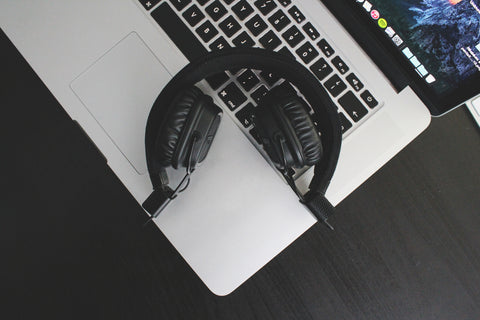As was told previously, the journey to a good your mix begins at the first stages of recording. The basics like proper microphone and its placement in a good, well treated room will determine what sort of material you get to work with. But even if you get all the right tools in all the right places, you can still make one huge mistake that won’t be fixable later on – recording with too high or too low volume.

Here are couple pointers to get it right:
Rules for recording levels in the digital age
As you probably already understand, the key is to find the middle way, the “sweet spot”. It is obvious that we would not want the levels to be too quiet – such tracks will simply lack the amount of gain needed for you to be able to work properly. Same goes for turning the volume up too high – if the meter is glowing red, you, sir, have a track that is “too hot” on your hands. So how loud should it be, you ask? If you are recording digitally, the answer is – not as loud as you probably think.
In the early “golden” days of analogue technology engineers would often try to mask things like tape hiss and other unwanted noise by trying to get as much signal from the track as possible. The goal – get your levels as “hot” as you can without crossing the “clipping” line. Such was the ancient way of getting your audio clean. In the age of digital audio workstations (DAW) there’s a lot less noise. If you’re recording in your bedroom you’re (hopefully) not using tape and analogue gear. Some people find the quiet, precise digital recording irritating though, saying it’s too transparent.
Clipping: friend or enemy?
It is worth noting that the beauty of analog recording is found in the naturally created distortion/saturation that occurs when the signal is overloaded to tape. The way it reacts is somehow actually quite pleasant to hear, so a lot of engineers do this on purpose when recording drums for example.
However, things are different if you record digitally. When you clip the sound in a DAW like Pro Tools you get ugly, harsh digital distortion. This is insanely displeasing to the ear for most people. Actually with a digital workspace you should not even get close to the edge of clipping both with individual tracks and the master bus to be safe.
Perks of recording digitally
Don’t be quick to uninstall your DAW though! There are actually quite a lot of useful and necessary things that the digital world makes available. Now most of us have access to recording at 24 bit rate. The extra amount gives recording engineers a lot of the so called headroom. When recording at 24 bit, one has more than 144dB of dynamic range available. That means you can record at lower levels and still end up with a very neat & clear, totally noise free (if done correctly) audio signal to work with.
So try not to push the volume to high for a change. If your meters are dangling up to -6db or -4db then you might be “too hot to handle”… haha.
Try dialing down so that you constantly hit just half way to two thirds up the meters. The correct way to set your levels depends on the situation but even if this example seems too radical, give it a try and you’ll see that there is no need to follow the old tradition of going as hot as possible without clipping in the digital age.
